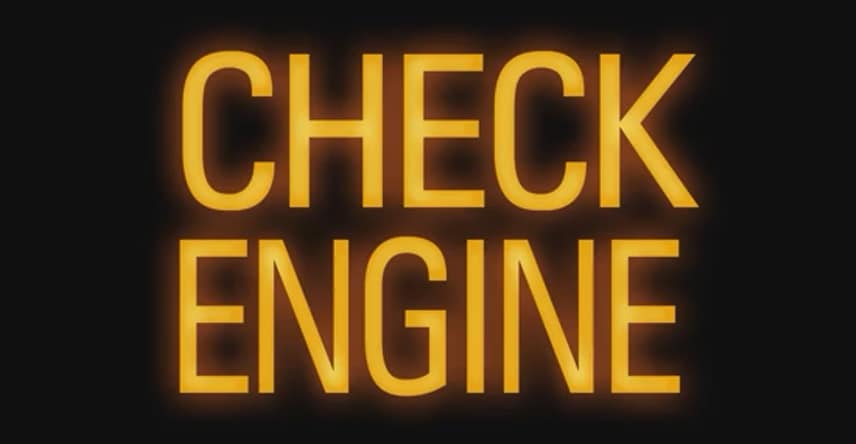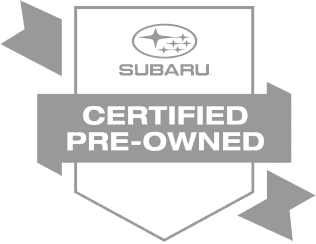
TL;DR
- Your Subaru check engine light signals a vehicle issue. Yellow means service is due, but red or blinking requires immediate professional attention and towing. Always first check for a loose gas cap.
- Common causes for the check engine light range from a loose gas cap to faulty oxygen sensors, Mass Air Flow sensor issues, EVAP system problems, and ignition malfunctions.
- For accurate diagnosis and expert repairs, New York drivers should trust Koeppel Subaru. Our factory-trained technicians and advanced equipment ensure comprehensive, reliable service for your Subaru.
-----
Also Read: Subaru Forester Towing Capacity by Year - Guide for New York Drivers by Koeppel Subaru
The illumination of the Subaru check engine light on your dashboard can be an unsettling experience for any driver, often bringing with it a wave of anxiety about potential issues and repair costs. For New York drivers navigating the bustling streets of Queens, Manhattan, Brooklyn, Staten Island, Bronx, Westchester, and Long Island, understanding this warning light is crucial for maintaining vehicle safety and performance. When your Subaru check engine light appears, it signals that your vehicle’s onboard diagnostic system has detected a problem. This guide aims to demystify what that light means and outline the necessary steps to take, ensuring you and your Subaru remain safe on the road.
Understanding Your Subaru Check Engine Light
The Subaru check engine light can convey different levels of urgency based on its color and behavior. It is essential to pay close attention to these signals to determine your next course of action.
A yellow check engine light indicates that your vehicle is in need of service but is generally still safe enough to drive to a Subaru service center. While it may not feel immediately critical, addressing a yellow light promptly can prevent minor issues from escalating into more significant and costly problems.
However, if your check engine light illuminates red, this signifies a serious issue that demands immediate attention. In such a scenario, you should pull over as soon as it is safe to do so and arrange for your vehicle to be towed to a service center. Driving with a red check engine light could lead to severe engine damage and create extremely unsafe driving conditions.
Beyond color, the light’s behavior also offers clues. If the check engine light is constantly on, your vehicle’s diagnostic system has identified a problem that needs fixing. Even if your Subaru appears to be operating normally, it is best to bring it in for service as soon as possible to prevent additional issues from developing.
An intermittent check engine light, particularly if you notice changes in performance when it is on, suggests something might be on the verge of failing. In this case, try to drive your vehicle as little as possible until you can have it serviced, as you risk it not starting again.
If the light is on and you experience a noticeable performance issue, such as a consistent decrease in power, your vehicle may have entered a "limp mode" to prevent further damage. In this situation, it is best to go straight to a service center or have your vehicle towed to avoid engine damage.
Most critically, a blinking check engine light indicates a major issue. If this occurs, pull over safely and have your Subaru towed to a Subaru service center.
Common Reasons Your Subaru Check Engine Light Illuminates
A variety of issues can cause your Subaru’s check engine light to turn on. Our sources highlight several common culprits:
- Loose Gas Cap: Surprisingly, the most common reason for a check engine light to come on is a gas cap that is not properly closed or is loose. A loose gas cap can trick your Subaru’s computer into thinking there is an issue with the EVAP system. This can lead to reduced fuel pressure, allow fuel vapors to escape, decrease fuel economy, and increase harmful emissions. The simple fix is to remove the gas cap and then securely reattach it, tightening it until you hear it click. It may take a few driving cycles for the Subaru to recognize the fix and turn off the light.
- Faulty Oxygen Sensors: Often cited by Subaru experts as a popular reason for the check engine light, oxygen (O2) sensors play a vital role in your vehicle’s exhaust system. These sensors measure exhaust gasses and oxygen levels, providing crucial information to the computer to determine the correct air and fuel mixture. Most modern vehicles have at least two O2 sensors. A faulty oxygen sensor can cause your vehicle’s computer to supply too much or too little fuel to the engine, which can lead to engine misfires, poor fuel economy, excessive smoke, or even total engine failure. Due to their tricky and critical nature, factory trained experts like those at Koeppel Subaru should handle O2 sensor diagnostics and replacements.
- Mass Air Flow Sensor Issues: The Mass Air Flow (MAF) sensor measures the amount of air entering the engine and relays this data to the computer. This information is essential for ensuring the proper air and fuel mixture. Issues such as an expired engine air filter or exposure to dirty or particle rich air can cause the MAF sensor to fail or trip a code. A faulty MAF sensor can result in engine misfires, poor fuel economy, reduced performance, and potentially more damage to your engine. It is advisable not to drive for long with a tripped MAF sensor without having your vehicle checked.
- EVAP System Problems: Modern vehicles are equipped with an evaporation (EVAP) system that uses a canister of activated charcoal to capture gasoline fumes before they are safely returned through the engine. If there is an issue with the evaporation canister or any other component in this system, your check engine light will activate. This problem can often be resolved by replacing the canister. A Subaru service center with experts who can read CEL codes is the best place to diagnose such an issue.
- Ignition System Malfunctions: Subaru engines, including the advanced BOXER® engines, feature sophisticated ignition systems where precision is key for each spark plug to fire correctly. Problems with ignition coils, wires, or the spark plugs themselves can trigger the check engine light. Since these issues can potentially cause your engine to die, ignition system problems often result in a red check engine light. Faulty spark plugs or spark plug wires can lead to engine misfires, reducing fuel economy and performance, or even prevent the engine from running at all.
- Coolant Temperature Sensor Failures: The computer in your Subaru relies on the coolant temperature sensor to read the engine’s temperature, which influences how the engine runs and alerts you to overheating. If this sensor fails and triggers the check engine light, you might not receive a proper alert about your engine overheating until the process is already underway. An overheated engine can lead to significant damage and prevent your vehicle from running effectively or at all without service.
- Catalytic Converter Issues: The catalytic converter is a vital component of your vehicle’s emissions system, responsible for removing toxic carbon monoxide. Over time, especially in higher mileage vehicles, the catalytic converter can become clogged with material. A failing or clogged catalytic converter can severely impact your Subaru’s fuel economy and overall performance.
What to Do When the Light Appears
When your Subaru check engine light comes on, your initial response should be calm and systematic.
- Check Your Gas Cap: As the most common cause, ensure your gas cap is securely tightened. Remove it and screw it back on until you hear it click several times. If this was the issue, the light may turn off after a few driving cycles.
- Assess the Light’s Color and Behavior: Determine if the light is yellow or red, and if it is constantly on, intermittent, or blinking. This will help you gauge the urgency of the situation.
- Notice Any Performance Issues: Pay attention to any changes in your Subaru’s performance, such as decreased power, unusual noises, smoke, or odors. If you observe a significant drop in performance or a blinking light, pull over safely.
- Seek Professional Diagnosis: Regardless of the light’s behavior, it is always recommended to have your Subaru professionally diagnosed by skilled technicians. Modern Subarus are equipped with an On-Board Diagnostics II (OBD-II) system that triggers specific trouble codes when a problem is detected. Technicians at a Subaru service center have the most up to date diagnostic equipment to quickly read these codes, accurately diagnose the issue, and perform the necessary repairs. Trying to diagnose complex engine problems yourself without the right tools and expertise can be risky and may lead to further damage.
Why Choose Koeppel Subaru for Your Check Engine Light Service
For New York drivers, choosing the right Subaru service center is paramount, especially when facing a check engine light issue. Koeppel Subaru in Long Island City, NY, is committed to providing exceptional car care and customer service.
- Factory Trained Experts: The technicians at Koeppel Subaru are factory trained and highly skilled, ensuring they possess the specific expertise required to service advanced Subaru systems, including elite BOXER® engines. They are adept at handling complex components like O2 sensors and diagnosing a wide range of issues that could trigger your check engine light.
- Advanced Diagnostic Equipment: Koeppel Subaru utilizes state-of-the-art diagnostic equipment that can quickly and accurately read Subaru OBD-II Trouble Codes. This ensures a precise diagnosis, preventing unnecessary repairs and getting you back on the road faster.
- Comprehensive Service Offerings: Beyond addressing check engine lights, Koeppel Subaru provides a full spectrum of maintenance services essential for New York drivers. This includes routine maintenance, oil and fluid checks, brake service, tire care, and addressing vehicle recalls. These regular appointments are crucial for preventing small problems from blossoming into larger, more expensive ones
The Koeppel family has been serving New York’s automotive needs since 1937, building a legacy of trust and commitment. At Koeppel Subaru, every customer is treated like family. We understand the unique demands placed on vehicles in the New York metropolitan area and are dedicated to providing the highest standards of customer service and automotive expertise.
Need a new ride? See our inventories of latest Subaru models and reliable used cars!

